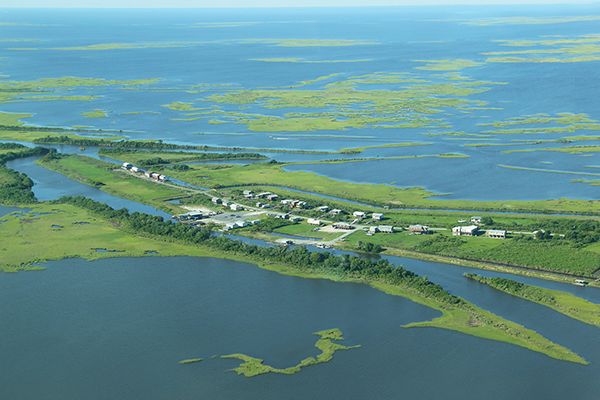Members of the Biloxi-Chitimacha-Choctaw tribe who live on tiny Isle de Jean Charles in south Terrebonne Parish will trade their ancestral home for a 515-acre parcel of farmland.
The tribe of Native Americans plans to move to higher ground about 40 miles north of the island near Houma, La.
They have little choice.
The land the tribe has called home for nearly 200 years is all but gone. Coastal erosion, storms and soil depletion caused by dredging for oil and gas pipelines have chipped away at Isle de Jean Charles. It has shriveled from about 22,000 acres in 1955 to about 320 acres today.
A self-sustaining existence supported by agriculture, hunting and fishing was ruined long ago by land loss and saltwater intrusion.
Hundreds of people once lived on the island. About 80 remain in a scattering of houses and fishing camps.
They have hung on despite hardship.
Isle de Jean Charles is regularly battered by hurricanes and storm surges. A single, 3-mile road to the island that provides a lifeline to medical care, schools and jobs often floods and is impassable.
“Some people left because their kids couldn’t get to school. Some left because they couldn’t get to work. Some left because you can only have your house flood so many times,” said Dr. Heather Stone, an assistant professor of education at the University of Louisiana at Lafayette.
Stone has been collecting oral histories from tribe members to ensure their culture and traditions don’t disappear with the island. The stories, interspersed with history about tribe members and Isle de Jean Charles, will be included in a book she is writing. It will be published by the University of Mississippi Press.
While Stone works to help piece together the story of Isle de Jean Charles, the tribe is adding to an already rich history. Their community is the first in the lower 48 states to receive a federal grant for relocation due to environmental factors.
The migration will be funded by almost $50 million allocated by the U.S. Department of Housing and Urban Development in 2016. The Louisiana Office of Community Development is coordinating the move.
The office and island residents chose a patch of land that has been farmed for sugar cane. The parcel was selected over about 15 other sites said tribal chief Albert Naquin.
“It was the best site we looked at in Terrebonne Parish, as far as elevation, and as far as dry land. And it’s sort of secluded,” he said.
State officials are in the process of buying the land, which includes some wetlands. Once the purchase is finalized, tribe members and state officials will collaborate on a master plan for development.
In the meantime, tribe members remain committed to discovering as much about their identity as they can.
Naquin recently led a small group, including Stone, on a trip to a Smithsonian Institution conservation laboratory near Washington D.C. They sifted through artifacts, documents and photos in a quest to learn about the tribe’s roots.
Many of the items were videotaped and indexed, Stone said.
“It was a really good opportunity to see things that tribe members’ ancestors made. The pottery and baskets don’t exist anymore. They were lost in the floods, washed away,” she said.
Read more about Isle de Jean Charles and view photos from the digital edition of La Louisiane, the University magazine.
